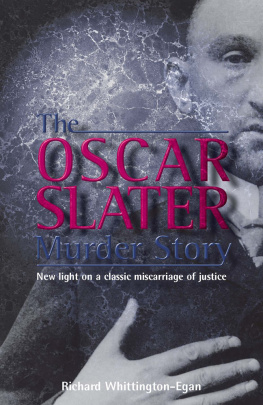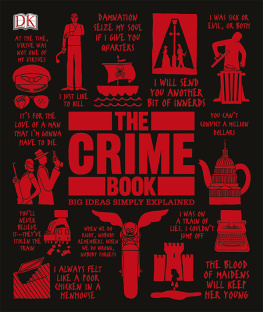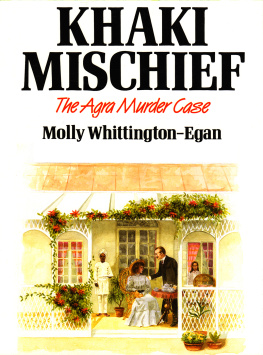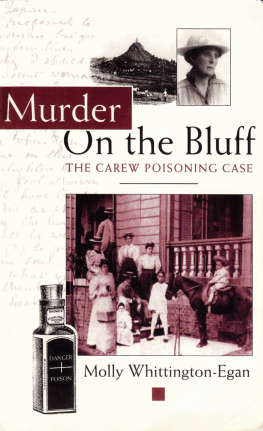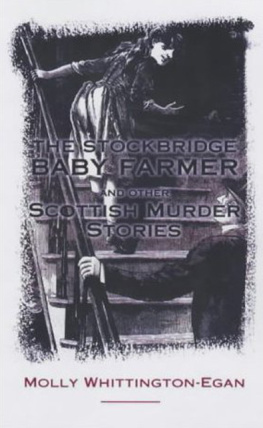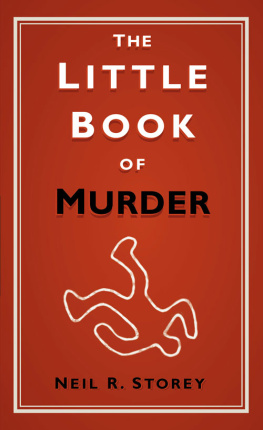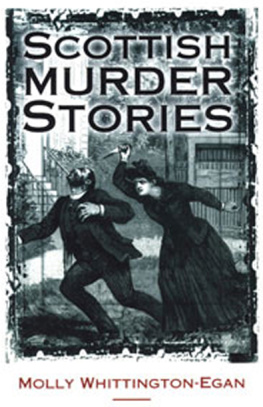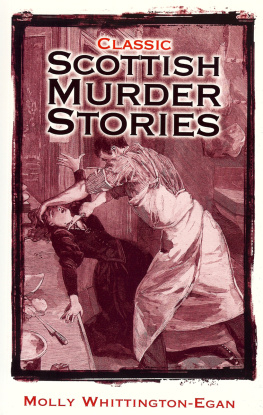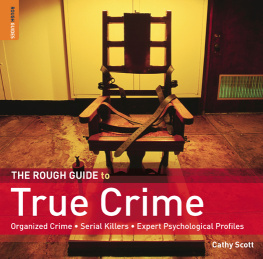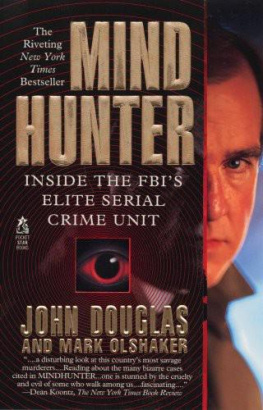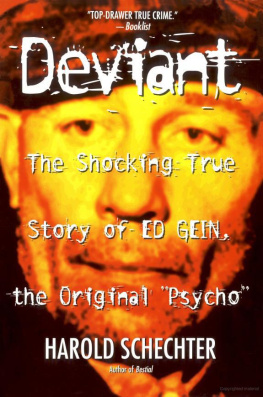The incomparable real-crime writing duo of Richard and Molly Whittington-Egan are incapable of producing anything less than superbly researched, rivetting stories of real crime in days gone by to open a Whittington-Egan book is indeed a delightful treat for anyone who appreciates the true art of mesmerising story telling, for these factual accounts are always told in prose that is second to none.
When you open a book by Richard or Molly Whittington-Egan, you will neither want to put it down, nor be able to.
Review by A Seymour on Amazon
Acknowledgements
In the compilation of this book we have accumulated debts to many friends and fellow-workers. We wish to acknowledge and thank them.
Jonathan Goodman, veteran comrade-in-arms through many a print pitched battle.
Robin Odell and Donald Rumbelow, old friends and pioneer labourers in the killing fields of Jack the Ripper.
Paul Begg, Martin Fido, and Keith Skinner, young friends and leaders in the new wave of Ripper experts.
Also that determinedly debunking, Jack pursuivant, sole practitioner, the late Melvin Harris.
And, most especially, Stewart P. Evans, much-appreciated confrre and Ripperine consultant.
Nicholas Connell, ever ready, willing and able to help in the quest for out-of-the-way data, and Lisa Hinchliffe, who we found perpetually prepared to trouble shoot for us.
Across the water
Albert Borowitz, who could always be relied upon for speedy resolution of any besetting problems of transatlantic malfeasance.
The late and sorely missed Clinton Krauss, of Vermont, rare book expert and rare friend.
Robert A. Flynn, of Portland, Maine, stalwart support and positive encyclopdist of all matters concerning the late Miss Lizbeth Borden, of Fall River.
We are sincerely grateful to an indispensable duo of Universal Providers of totally unobtainable books, The Elmers Clifford and Marie of Cheadle Hulme, and Paul Sheath, bookseller, of Malvern.
To another good friend, Wilfred Gregg, who continually, unfailingly, and uncomplainingly supplied from his unrivalled collection of world-wide criminous literature the elusive reference or fact that we sought, our most sincere gratitude.
To Stephanie Bilton we are deeply indebted for both her outstanding help in more recondite areas of research, and for her sterling work in providing many of the photographs which contribute so materially to the value of this volume.
Finally, we would thank Neil Wilson, our publisher, for friendship and sensitive help over the years.
RICHARD and MOLLY WHITTINGTON-EGAN
Contents
Celebrity Killers
The concept of evil long devalued, derided, and dismissed by psychiatrists and psychologists seems to have undergone a measure of re-evaluation. The prolonged contemplation of certain varieties of serial killers and mass murderers has given pause to easy moral dismissal.
Dr Michael Welner, a forensic psychiatrist and professor at New York University, has observed that: People say evil is like pornography: they know it when they see it, but can debate whether or when it is harmful. This, he maintains, is not true. We are finding widespread agreement about what is evil.
The old order of murder has changed. The cosy domestic poisonings of Victorian and Edwardian England, the almost jaunty bloodletting with knife, gun, and blunt instrument, the tidier ligatures with rope, cord, and thinbiting wire, all these purposive acts, motivated by comprehensible, if not excusable, human passions of love and malice, greed and gain, profit and loss, have been overshadowed. Today, we have the gang wars, the drug-borne slaughtering, and the reigns of the terrifying silencers of the lambs, the random repeat killers, slaying total strangers for the sheer recreational love of killing. They are the Serial Killers.
The name was coined, so the story goes, in the 1970s, by FBI agent Robert K. Ressler, for the engagingly homely reason that such multiple murderers, killing in series as they do, brought back to him memories of the cliff-hanger film serials that he watched at the Saturday morning cinema in his home-town as a child.
But what exactly is a serial killer? How does he differ from a mass murderer? Is it simply a matter of semantics? Both, surely, are simply multicides? The determining diagnostic feature has to be the psychological motivation of the killer. The mass murderer kills numbers of people for any one, or any combination of, the classic motives gain, revenge, elimination, jealousy, conviction, which is to say killing for an idea or ideal. The serial killer kills primarily for a compulsive sexual reason often a repulsive one Lustmord or out of pure love and lust for killing per se; although, of course, just to make things more complicated, incidental benefits might, accidentally as it were, accrue to be taken advantage of.
The serial killer is by no means a new, essentially modern species of homicidal monster. It is just that, like the dinosaurs in Jurassic times, he has increased and multiplied to crescendo proportions since the 1980s. Serial murder is a growth industry. The up-and-coming thing. Years of rapt experimentation and innovation lie ahead.
The serial killer concept may be transatlantic, but one of the pioneer exponents of the mode was British Jack the Ripper, back in 1888. Other home-bred produce includes Christie the Notting Hill Necrophile, Brady and Hindley the Moorland Infanticides, Peter Sutcliffe the Hammerman of the Yorkshire Ridings, and Dennis Nilsen the Cricklewood Scourge of the Gay. Undeniably though, it is America that has yielded the richest, thickest, and most variegated crop. Against this, however, must be weighed in the balance the fact that the most sophisticated, high-tech, state-of-the-art serial killer tracking down techniques are also American.
The foundation, in-depth, behavioural analysis study of the serial killer phenomenon was undertaken by a crack team of FBI specialists, the Behavioural Science Unit (BSU), at the FBI Academy, which stands, stoutly fenced and defended of access, in 600 acres of woodland at Quantico, in Virginia. It was the Quantico behaviourists who put together the typical profile of the serial killer. Most are solitary males, although some hunt in pairs Bianchi and Buono, Lake and Ng; even mixed sex pairs, Brady and Hindley, Gallego and wife. Around ten per cent are doctors, dentists, or professional health workers of one sort or another. Almost a third turn out to have been mental patients or ex-convicts. They come from all walks of life and are frequently the products of broken, or severely brutal homes, where they have themselves been subjected to gross cruelty, sexual abuse, and in some cases prolonged and systematic torture, in deprived childhood. Quite often they have at some time in their lives sustained head injuries. Characteristically displayed early presignatory symptoms include bed-wetting (after the age of twelve), cruelty to animals, and mischievous fire-raising. They routinely graduate to thievery. Later, fear and distrust of women may be manifest. Part of the pattern, too, is alcohol, and, ever-increasingly nowadays, drugs, plus pornography, as buttresses for the serial killers high dominance requirements, and short-cut escape routes into comfortable realms of fantasy. Serial killings are usually intraracial.
Returning to the scene of the crime is a not uncommon behavioural feature: sometimes for the practical purposes of necrophilia, or perhaps just to masturbate over the corpse. The clues left behind are little more than semen stains and pubic hairs. In some cases, though, semen has been recovered from the victims vagina or rectum. Interestingly in this context, the British serial killer, John Francis Duffy, the Railway Rapist, whose sexual assaults escalated to murder in 1985-6, having perhaps heard of the then recent forensic advance afforded by DNA, or possibly aware that blood group identification could be made from sperm, stuffed burning paper handkerchief tissues into his victims genitals in order to destroy sperm traces.


